Patrick Willie (Navajo) is a professional Native American hoop dancer from an urban area and in his youth had long hair braided down his back. He did not fully understand the cultural reasons for having long hair but kept his long hair because it pleased his parents. The teasing at grade school continued into high school and finally led Willie to cut his hair.
“I felt a lot of social pressure for being different and I cut my hair,” Willie said.
According to Willie, going to school in an urban area as a Native American was difficult because he never fully fit in. He was too native for the white kids and not native enough for the native kids. He felt disconnected between two worlds.
“When I look back on it now, I realize there was so much I could have learned,” Willie said.
Willie balances the two worlds of his traditional values and modern life by learning about the history from his parents.
“Holding onto my culture in the modern world is about identity and remembering where I come from,” Willie said.
History
Native American people have a long history on the American continent. Many tribes have origin stories about how their ancestors came to the land. These origin stories are different from tribe to tribe but contain many similarities about the Holy People (deity), different worlds, and symbolism.
The history of the Native American people is told orally and passed down generation-to-generation. Detailed, documented histories did not come until the Anglo-Saxon colonists.

Sunni Begay (left) and Dion Tapahe (right) dance on BYU’s Living Legends in the Native American section. They enjoy dancing because it reminds them about the history of their ancestors. (Erin Tapahe)
Timeline: (information from the History Channel)
1492: Christopher Columbus marks the beginning of European exploration to the Americas.
1700-1800s: Diseases and wars kill hundreds of thousands of Native Americans. Laws are passed by the U.S. Federal Government to take away their rights and land.
May 28, 1830: The Indian Removal Act was passed. President Andrew Jackson allows Native Americans plots of land west of the Mississippi River in exchange for the land already taken.
1838: Trail of Tears is one of the first major forced-relocation trek from the Indian Removal Act. The route covered 1,200 miles through Alabama, Arkansas, Georgia, Illinois, Kentucky, Missouri, North Carolina, Oklahoma, and Tennessee. More than 5,000 Cherokee people died from this journey.
1851: U.S. Federal Government passes the Indian Appropriation Act. This created the Indian reservation system. Native Americans were not allowed to leave their reservations without approved permission.
1862: U.S. Congress passes the Homestead Act. This act made lands west of the Mississippi River available to non-native settlers. These lands originally belonged to numerous Native American nations. This was the beginning of the mass migration of the western territory.
1864: The Navajo Long walk is another major relocation to a new reservation. More than 8,000 Navajos were forced from Fort Defiance, Arizona, to Mosque Redondo, New Mexico, which was more than 300 miles.
1870: Bison are nearly extinct and this causes a crisis for Plains tribes because they rely on them for survival.

This timeline lists several major historical events from the time Christopher Columbus arrived to the Americas to present-day. (Erin Tapahe)
June 25, 1876: Battle of Little Bighorn also known as Custer’s Last Stand. The leaders of this battle was Sitting Bull and Crazy Horse against Lieutenant Colonel George Armstrong Custer. More than 10,000 Native Americans gathered along the Little Bighorn river to protect the sacred Black Hills. Custer underestimated the Native Americans and led to defeat.
October 6, 1879: The first off-reservation boarding school, Carlisle Indian Industrial School, was established. The school was designed to assimilate Native American students. For 25 years, the headmaster, Colonel Richard Henry Pratt, enforced his motto, “Kill the Indian in him and save the man.”
1887: Congress passed the General Allotment Act also known as the “Dawes Act”. Tribal lands were not allotted, contrary to original plan, to Native Americans on the reservation and sold to the United States. Then the land was opened for homesteading. Before the Dawes Act, the total land held by American Indian tribes on reservations was 138,000,000 acres. After the allotment period, land was reduced to 48,000,000 acres (approximately two-thirds less).
1887: Boarding Schools became more popular and 200 schools were established with over 14,000 Native American children enrolled.
1890: The Wounded Knee Massacre resulted in hundreds of unarmed Lakota people massacred for practicing the Ghost Dance, which was part of their religion. Approximately 150 men, women and children are killed.
1891: Congress authorized the Indian Education Act. The Commissioner of Indian Affairs enforces rules and increases regulations to ensure Native American children attended boarding schools designed for assimilation.
1924: Indian Citizenship Act. Congress grants citizenship to all Native Americans born in the territorial limits of the country.
1954-96: The Church of Jesus Christ of Latter-day Saints first started the Indian Placement Program. Native American children who were baptized members of The Church of Jesus Christ of Latter-day Saints church were placed in foster homes of church members during the school year. Most children attended primarily white public schools, instead of boarding schools or local schools on the reservations. There is an estimated 50,000 Native American children who participated in this program.
1975: Congress passed the Indian Self-Determination and Education Assistance Act. This provided the U.S. Federal Government the opportunity to contract with tribal governments for federal services. Native American tribes were able to operate their own schools. This allows Native Americans to intertwine education with their native languages, beliefs and philosophies into their schools.
1978: The Indian Child Welfare Act addressed the care and custody of Native American children to non-native people. This gave authority to tribal courts to oversee the adoption and guardianship cases of Native American children and establish a strict set of statutory guidelines for those cases held in state court.
1978: Congress passed the Indian Religious Freedom Act and therein states the “policy of the United States to protect and preserve for American Indians their inherent right of freedom to believe, express, and exercise the traditional religions of the American Indian . . including but not limited to access to sites, use and possession of sacred objects and freedom to worship through ceremonials and traditional rites.” This is the first-time Native Americans are legally allowed to practice their traditional beliefs.
1990: The Native American Languages Act was passed and the U.S. policy is to “preserve, protect, and promote the rights and freedom of Native Americans to use, practice, and develop Native American languages.” The federal government encourages and supports of the use of native languages and encourages schools to include native languages in the curriculum. There are thousands of Native American languages lost, but with new technology, there is an increase of young people learning their ancestral language.
2016: The Standing Rock movement started for the protection of water and opposed the construction of the Dakota Access Pipeline. This movement brought people from around the world to Standing Rock in North Dakota and provided a unified voice for indigenous people.
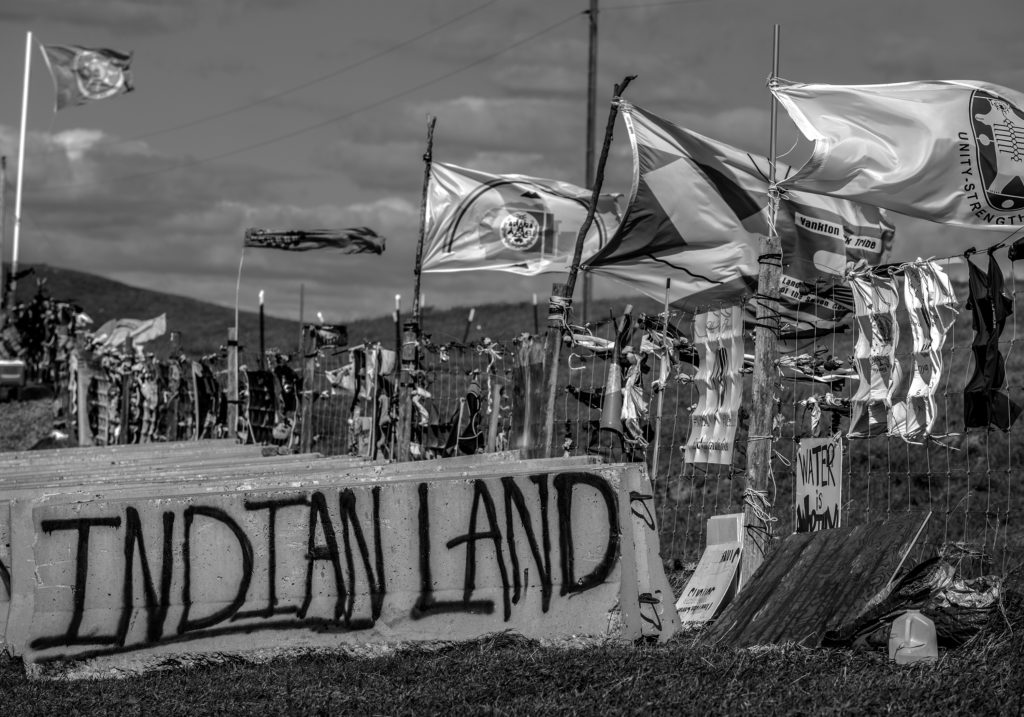
The gates outside Oceti Sakowin (one of the camps at Standing Rock, North Dakota) carry flags representing people from all across the world. This is a representation of the unification and gathering of people at Standing Rock. (Erin Tapahe)
The Standing Rock movement brought hundreds of Native American tribes together. Bryan Jansen (Navajo/Kiowa), BYU alumnus who studied Native American Studies at BYU, considers the Standing Rock movement impressive. “It’s crazy to think about how small native people are, of the world population, we were on a world stage at Standing Rock,” he said.
According to the Bureau of Indian Affairs, there were approximately 12,000 Native Americans who served in the military during World War I and were not granted U.S. citizenship at this time.
“Our people heard we were attacked by someone from somewhere, so there were old men in their 60s and 70s, even boys 13-14, carrying rabbit guns to enlist in the military,” Jansen said.
Jansen says there is a high number of Native Americans enlisted as soldiers because they were fighting to protect their land.
“The Indians were fighting in the war, not for the U.S. Constitution, but were fighting to protect their land,” Jansen said.
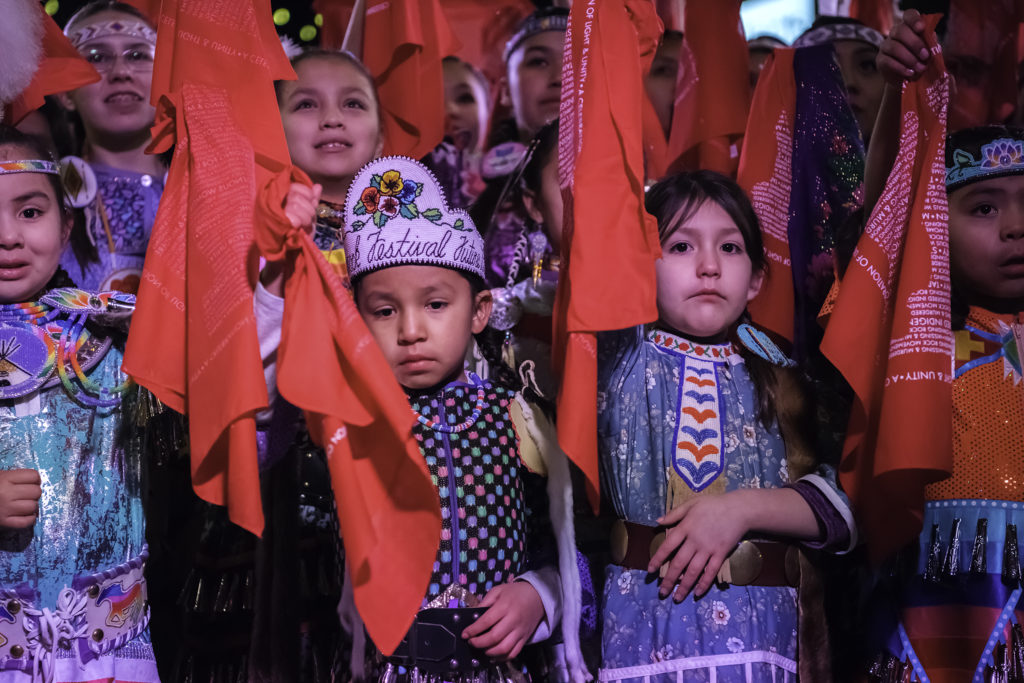
Jingle dress dancers gathered to dance for the Missing and Murdered Indigenous Women. (Erin Tapahe)
Michalyn Steele (Seneca), BYU law professor, finished a paper about the resilience of Native American tribes through the assaults of the federal government and settler/colonialism.
The main question of her paper was: what was it about their character, traditions and culture to enable them to withstand the forces of the federal government’s army?
“It’s a miracle the tribes withstood the policies and war efforts because the expectation was for the tribes to fade away,” Steele said.
Preserving History
Willie finds technology a positive because it provides the opportunity to preserve the Native American teachings and languages. He sees people from his community wanting to document their family history and making videos to share their culture.
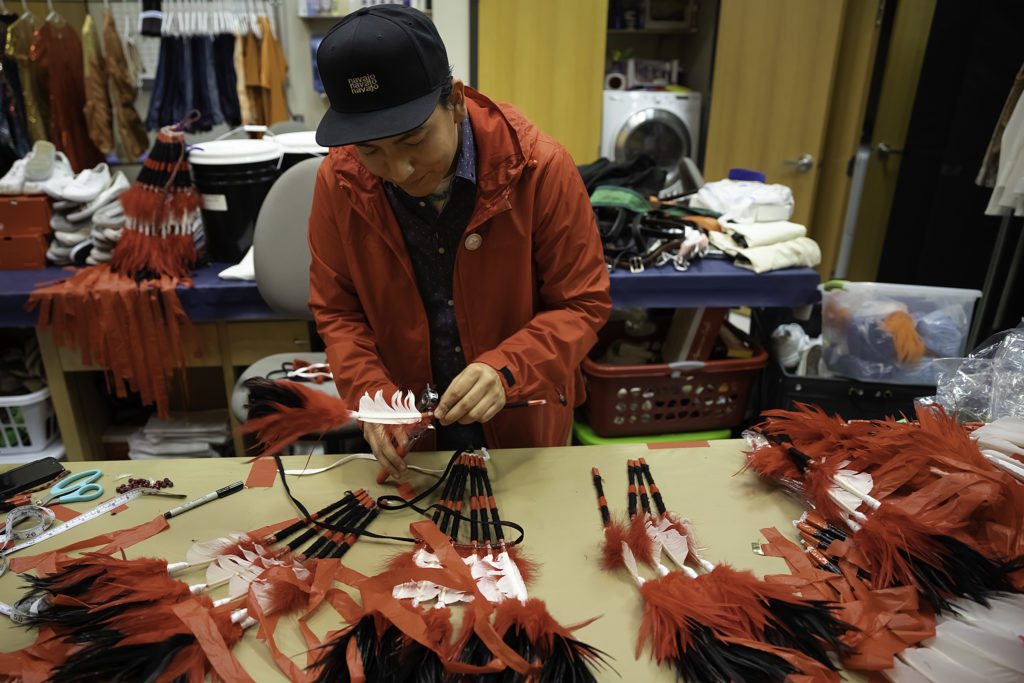
Patrick Willie is making men’s fancy bustles for BYU’s Living Legends group. He enjoys teaching and sharing his skills. (Erin Tapahe)
Willie has a YouTube channel and creates video-blogs to document his life and share his culture with his viewers. “I like making videos because I am able to share my experiences and knowledge,” Willie said.
Documenting culture is important to Willie because it is a preservation of history. “The Navajo language was dying but thanks to technology, they are preserving the language for the future generations,” Willie said.
Crystal Stewart (Navajo), a BYU student, is from Window Rock, Arizona, worked on preserving the Hal L. Taylor special collection. Taylor was the Southwest Indian mission president from 1965-1968. The documents contained the histories of the work done in the area and letters from general authorities.
Stewart explains before working on the project, she felt lost and struggled with finding a balance between her cultural heritage and religious beliefs.
“I read the reports, letters and miracles. I saw the church’s influence on Native Americans and it helped me navigate my own thoughts about combining my Navajo culture and LDS religion,” Stewart said.
According to Stewart, as she continued learning more about the history, she also learned more about herself.
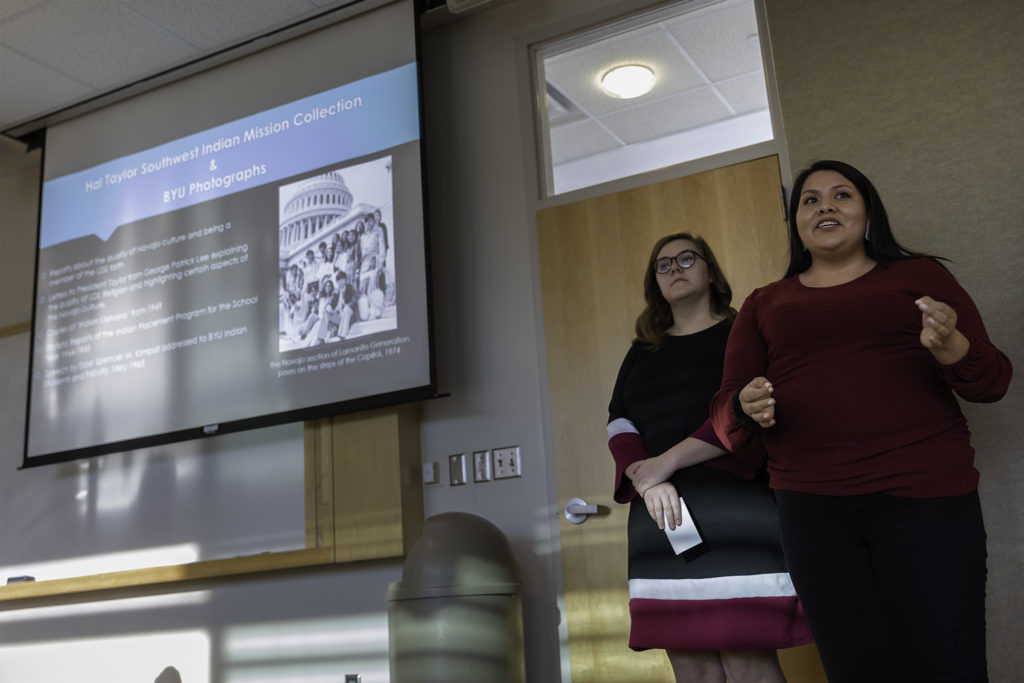
Crystal Stewart is sharing her findings from the Hal L. Taylor special collections at the end of the semester presentation. (Erin Tapahe)
“I came out with more confidence in who I am,” Stewart said. “It gave me the extra oomph to keep me going and keep learning even more about Native American history.”
Education

This infographic displays facts about Native Americans in education. (Erin Tapahe)
According to the US Department of Education, American Indian students have a high percentage (18 percent) who do not receive their high school diploma and are the second highest ethnic group living in poverty.
Jim Sam (Navajo), is the grazing official for the Oak Springs Chapter. He hopes for his grandchildren to obtain as much education so they can help Native American communities.
“I want them to get a lot of education, from college and in life, so they can use their education for good,” Sam said. “So they can help their people and families, too.”
Chauma Jansen (Assiniboine Sioux/Navajo), mother of four and a committee member working to rename the Provo peak, explains why it is important for her husband, Dusty Jansen, and her to play an active part in their children’s education is because teachers have a big influence about teaching children of Native Americans.
“It’s really important for parents to advocate for accurate teachings of Native American cultures and histories,” Jansen said.
The Jansen’s typically volunteer at their children’s schools for Native American Heritage month in November. They teach cultural presentations to show Native Americans are still here and not only in books.
Steele pursued a career in law because she saw the credibility attorneys have and recognized the ability to advocate for people whose voices are not always heard.
“Being a lawyer helps you to amplify their voices and helps you to advocate for issues about fairness and justice,” Steele said.
According to Steele, the purpose of education is to develop skills and give back. Steele believes it is important to give back to her brothers and sisters, tribal communities, and to offer her skills to the Lord.
“You can succeed because of your native inheritance,” said Steele. “That means you can do hard things and you had ancestors who overcame obstacles so you could be here, to achieve happiness and be a servant to future generations.”
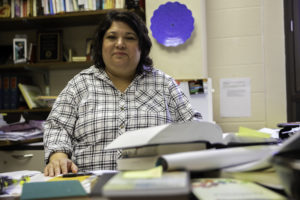
Michalyn Steele is in her J. Reuben Clark Law School office and finished writing a paper about the resiliency of Native American tribes. (Erin Tapahe)
Kimberlyn Yellowhair, BYU student, is from Monument Valley, Utah. Her motivation to succeed in school comes from her family and friends. She also she wants to prove she can succeed to those who doubted her ability to succeed.
Yellowhair lived in a home without running water and two hours away from the nearest Walmart. She says coming to BYU is easier because there is running water and everything is close.
The transition from the Navajo reservation to college life was hard for Yellowhair but she is determined to push through the discomfort because it means she is growing from her experiences.
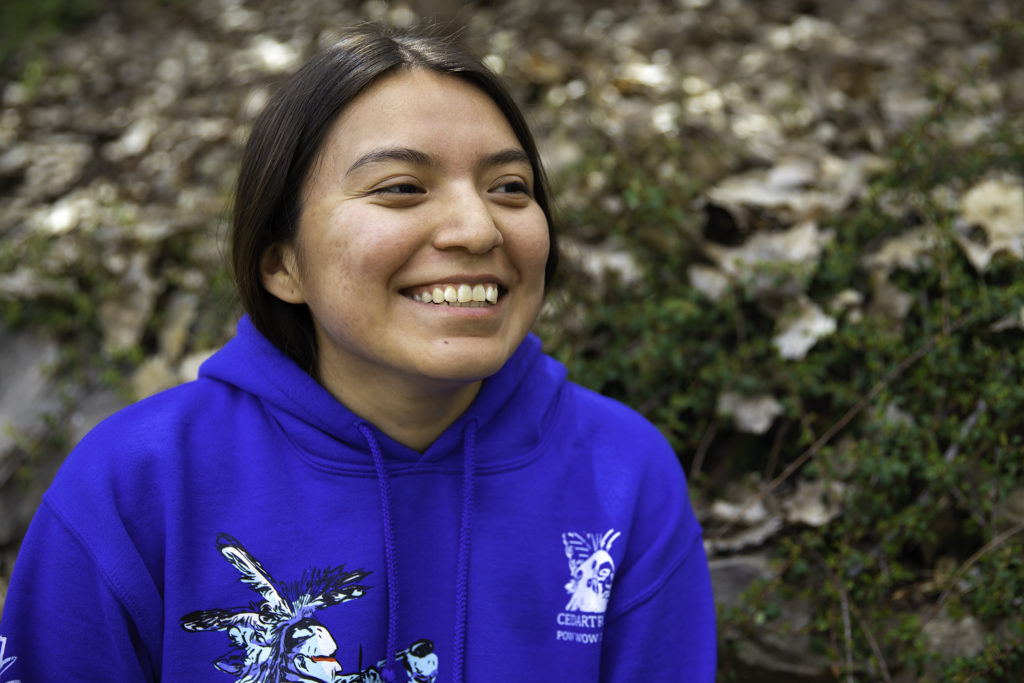
Kimberlyn Yellowhair is a freshman at BYU and hopes to help her people with education. (Erin Tapahe)
Chief Manuelito was a prominent leader and advocate for education. Just a few days before his death in 1893 Manuelito said, “My grandchild, education is the ladder. Tell our people to take it.”
Stewart is a descendent of Chief Manuelito. Education is a big part of Stewart’s life. She hopes to gain an education and help her Native American people.
Stewart’s grandmother motivates her to continue towards her college degree. She calls Stewart weekly and asks her about school, always ending with a pep talk in the Navajo language.
It is important for Stewart to pursue her education because she knows the sacrifices and trials of her ancestors.
“Their blood runs through my veins and I feel like they’re always there pushing me to keep going and to do better,” Steward said.
Cultural Education
Native Americans from urban areas typically struggle with identity and cultural knowledge. They are often faced with negative stereotypes.
According to Chauma Jansen, she wants her children to have friends with similar cultural teachings so her children do not have to feel alone in their cultural experiences.
“We have to bring cultural teachings into the family and our homes,” Jansen said.
All school districts have a Title VI program dedicated to teaching Native American children about their culture through dance, language, and history programs.
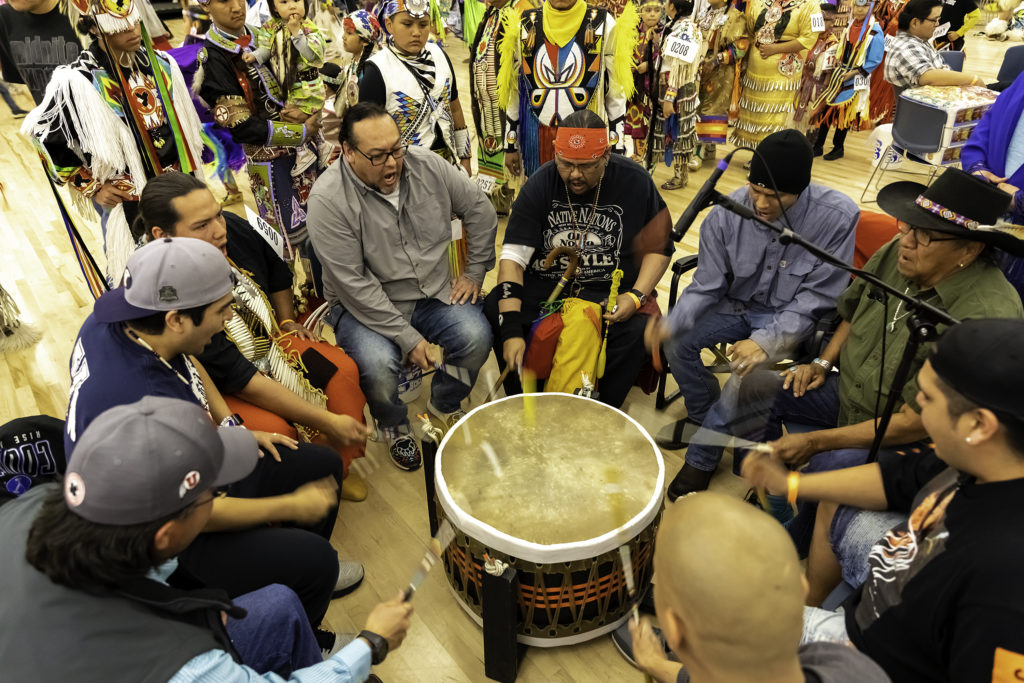
Bryan Jansen sings in a drum circle and wants to teach his children about his Native American culture. He hopes they will continue the teachings and pass on the Native American traditions to their children. (Erin Tapahe)
Jansen encourages those looking for more knowledge about their own Native American identity to be part of the community. There are different organizations helping the native community.
Sam encourages his grandchildren to learn about their culture as these teachings were passed down to him from his grandparents. It is important for Sam to live his culture and be an example for his grandchildren.
“I am living on the reservation, working with my community and serving my people. These are all good things I want my grandchildren to do as well,” Sam said.
Jonah Graham is a Monument Valley tour guide. People from around the world come to the Navajo Nation’s Monument Valley Tribal Park to witness the unique rock formations. Graham feels a sense of pride when he shares the stories of his ancestors and he finds it a great responsibility.
“I am the representative of my Navajo people and I’m telling tourists about our (Navajo) way of life, our customs and traditions,” Graham said.
Balance:
Native American dancing is a reminder to Willie about the connection he has with his ancestors. Willie has competed in the World Champion Hoop Dance contest six times.
“I feel like dancing has been a huge connection to my identity and helps me find more about my culture,” Willie said.
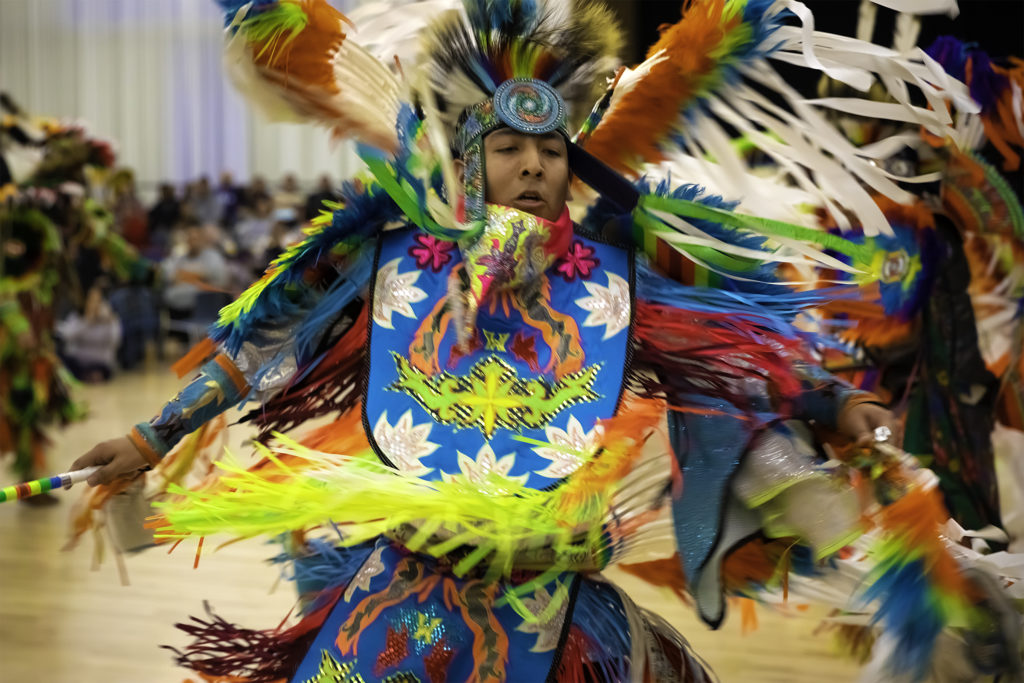
Patrick Willie dances the Native American men’s fancy bustles dance at BYU’s Cedartree Pow Wow. (Erin Tapahe)
Stewart encourages the Native American youth to search for learning opportunities for their culture and find a community to help them navigate through the modern world.
“It’s easy to give up but it’s harder and more fulfilling for you to try and find the balance for yourself because everybody’s balance is different,” Stewart said.
